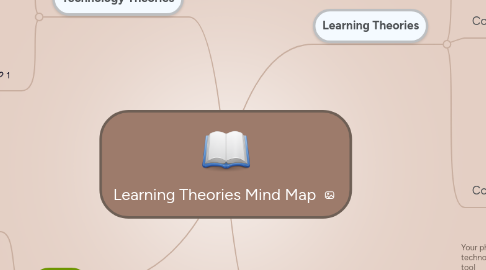
1. Technology Theories
1.1. Media Ecology
1.1.1. Technology changes the way in which we view the world
1.1.2. Technology and modes of information communication play a leading role in our society
1.1.3. "the study of complex communication systems as environments."-Definition
1.1.4. How technology affects us
1.2. SCOT
1.2.1. Social Construction of Technology
1.2.2. To understand how technology is used, we must understand how technology is affected by the social contexts of its use: How we affect technology
1.2.3. Can help us to analyze why a piece of technology was or was not a success
1.2.3.1. BluRAY vs HDDVD
2. TPACK
2.1. Image of TPACK
2.2. iidentifies the areas of technology integration in the classroom, taking into account the multi-facted ascpects of teaching
2.3. Addresses the Content, Pedagogical, and Technological knowledge, as well as all the intersections between them.
2.4. TPACK: Technological, Pedagogical, and Content Knowledge
3. Learning Theories
3.1. Constructivism
3.1.1. Human learning is constructed; new knowledge is built upon previous knowledge
3.1.2. Educators must recognize the previous knowledge that learners come into a course with, and then build upon that knowledge as they teach
3.1.3. Learning is active, learning occurs when learners confront a new situation inconsistent with their current understanding
3.1.4. Authentic Learning
3.2. Connectivism
3.2.1. Knowing where to find information is more important than knowing information
3.2.2. Active Learning
3.2.3. Choosing what to learn is itself part of the learning process
3.2.4. Educators need to provide the framework for students to make connections in the classroom
3.3. Cognitive Load
3.3.1. an information processing theory based on our minds cognitive architecture
3.3.2. There is a limited capacity to our working memory
3.3.3. There are 3 types of cognitive load: Extaneous, Intrinsic, and Germane
3.3.4. Educators can work around these limitations by using techniques such as chunking of knowledge, repetition, and provide better "information landscapes" by avoiding splitting student attention and clean and elegant design of information.
